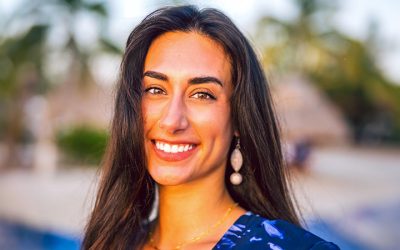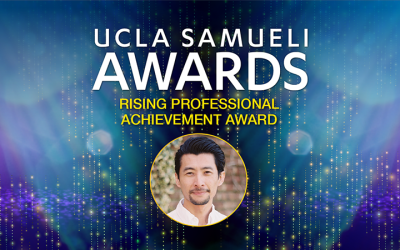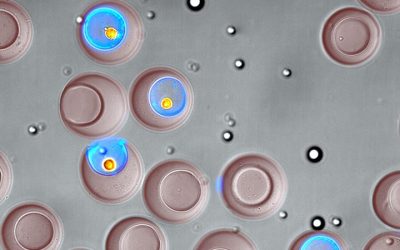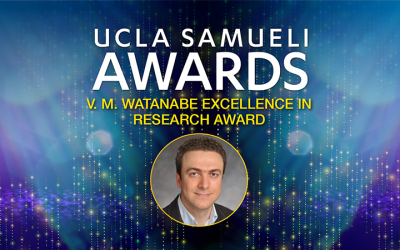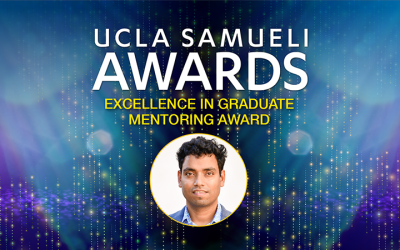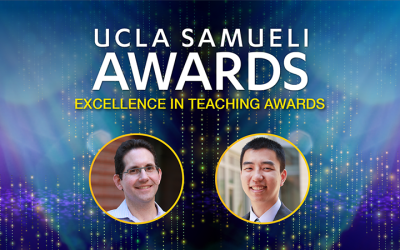December
Huffington Post
Women in STEM
Last month, UCLA hosted a symposium to address how higher education can assist in advancing the careers and goals of women in STEM (Science, Technology, Engineering, Mathematics). Electrical Engineering Professor Diana Huffaker was quoted in the coverage.
November
The Los Angeles Times
Anniversary of the First Internet Message
Inside Science
Cancer Killing Capsule (video)
The two most common treatments for cancer, chemotherapy and radiation, effectively destroy cancer cells, but also damage healthy cells in the process. A new therapy aims to change this, by employing proteins that only target cancer cells. UCLA chemical and biomolecular engineering professor Yi Tang and his team have created a less invasive treatment for breast cancer that uses proteins to kill the cancer from the inside out.
The Los Angeles Times reported on the anniversary of the first Internet message, sent Oct. 29, 1969 from UCLA, and quoted Leonard Kleinrock, distinguished professor of computer science, who led the research team.
October
The Wall Street Journal
A Virus on the Camera Roll
Smartphone cameras are getting better and better. But how about one that can photograph a single virus? It won’t come with the latest iPhones, but it does exist thanks to electrical engineer Aydogan Ozcan and his team at the University of California, Los Angeles.
The news was also carried in: The Los Angeles Times; Entrepreneur; Forbes; MIT Technology Review; Fast Company; Fast Company’s Co.Labs blog; The Engineer (U.K.); Wired UK; and Chemical & Engineering News.
MIT Technology Review
Genetically Modified Bacteria Produce 50 Percent More Fuel
Researchers at UCLA have opened a path to cheaper and cleaner biofuels by using genetic engineering to fundamentally change how certain organisms process sugar.
The news was also carried in Chemistry World, R&D Magazine, and RedOrbit.
Discovery News
Stretch and Roll This Transparent Display
Electronic displays are usually made of glass, because that’s the only material strong enough to protect the delicate electronics of a touch screen. But now there’s a display technology that allows a screen to be stretched and folded, while still keeping the electronics inside safe and working. It’s a transparent, elastic organic light-emitting device, or OLED, developed by researchers from UCLA led by Qibing Pei, a materials scientist.
The news was also carried in several outlets, including: EE Times; Fast Company; IEEE Spectrum; Quartz; The Engineer (U.K.); and Smart Planet.
September
KCRW “Which Way, L.A.?”
Safer Helmets May Help Reduce Football Concussions
Vijay Gupta, professor of mechanical and aerospace engineering, and materials science and engineering, has developed a very thin, very strong polymer that goes inside a football helmet, between the foam padding and the player’s skull, that can reduce the impact of a blow by about 25 percent.
The development was also carried in The LA Weekly and KABC Channel 7.
August
Wired UK
Computer Scientists Achieve ‘Iron Wall’ Software Obfuscation to Protect IP
An article in Wired UK highlights the breakthrough of UCLA computer science professor Amit Sahai and colleagues on software obfuscation. The team used “mathematical jigsaw puzzles” to make software fully functional, but impervious to reverse engineering attempts.
The news was also carried in:QZ; GigaOm; R&D Mag; Engineering and Technology (U.K.); PhysOrg; RedOrbit; United Press International; Laboratory Equipment; ThreatPost; and ScienceDaily.
Mashable
This Film Could Turn Your Smartphone Into a Solar Panel
Researchers at UCLA have developed a two-layer, see-through solar film that can be placed on any number of glass surfaces to harvest energy from the sun. The thin device uses two polymer solar cells to collect sunlight and then convert it into useable power, and can be used on windows in your home, the sunroof of your car, and even the display of your smartphone. The technology could one day be included in those products.
The news was also carried in:KCET; CleanTechnica;and GigaOm.
Forbes
Causes Beyond Correlation
A column in Forbes on a company’s goal to find causes, not just correlations, through massive computing and big data analytics, cites the pioneering work on Bayesian networks by UCLA computer science professor Judea Pearl for paving the way in this area.
Gizmodo
UCLA’s 1948 Mechanical Computer Was Simply Gorgeous To Watch in Action
Gizmodo’s Paleofuture blog highlighted a 1948 film short on UCLA’s “thinking machine,” a mechanical differential analyzer that sped up solutions to complicated mathematical problems.
The short film was also recently featured in Wired.
July
KPCC 89.3 Take Two
A Coded Message in UCLA’s Campus Floor Tiles
UCLA’s Boelter Hall contains a secret code hidden in its floor tiles. KPCC’s Take Two program catches up with computer science professor and Internet pioneer Leonard Kleinrock on the meaning behind the message.
In June, Take Two interviewed Kleinrock about the recently revealed federal government surveillance of Internet and telephone usage.
May
KCET
Imagine a ‘Battery’ that Charges 100 Times Faster
KCET’s Rewire blog featured research led by Professor Bruce Dunn on a new material for power delivery that could lead to a high-performance ‘supercapacitor.’ Graduate student Veronica Augustyn was the lead author on the research.
April
Los Angeles Times
Engineers, Conservationists Work on Lasting Fix for Watts Towers
A team of LACMA conservators and UCLA engineers get to root of deterioration problem affecting the 17 interconnecting sculptures of Watts Towers. The towers have been deteriorating for years, prompting quick patch jobs that did little long-term good. Now, a team of engineers from UCLA and conservationists from LACMA have descended on Watts to try to discover the root problems for the decay and come up with a more lasting fix.
The story was also carried on KCRW’s “Which Way, L.A.?” radio program; on KTLA Channel 5 News; on ABC Channel 7 News; and in Valley View News.
EE Times
Semiconductor Research Corporation Funds Green Chemistry Hunt
An article in EE Times highlighted research to find more environmentally friendly chemicals for semiconductor manufacturing. The project’s principal investigator, Jane P. Chang, professor of chemical and biomolecular engineering and associate dean of research and physical resources, was quoted. Chang also holds the William Frederick Seyer Chair in Materials Electrochemistry.
March
MIT Technology Review
Nanocapsules Sober Up Drunken Mice
Researchers have reduced blood alcohol levels in intoxicated mice by injecting them with nanocapsules containing enzymes that are instrumental in alcohol metabolism. The treatment demonstrates a novel drug delivery technology that could have broad medical applications.
The news was carried in many outlets around the world including: The Scientist (U.K.); The Globe and Mail (Canada); Discovery News; Wired (U.K.); Popular Science; CNET; The New York Daily News; the New Zealand Herald; UPI; Smart Planet; The Irish Sun; BigThink; and Io9.
National Science Foundation
Artificial Retina Receives FDA Approval
The U.S. Food and Drug Administration (FDA) granted market approval to an artificial retina technology, the first bionic eye to be approved for patients in the United States. The prosthetic technology was developed in part with support from the National Science Foundation (NSF). UCLA bioengineering professor Wentai Liu played a key role in the development of the technology.
February
Wall Street Journal
Semiconductor Group Eyes Research Beyond Silicon
Some $194 million has been allocated for research projects at six universities by the Semiconductor Research Corp., a multi-company consortium better known as SRC, in an arrangement that also involves contributions from the U.S. Defense Advanced Projects Research Agency, or DARPA. UCLA is among the six universities set to receive funding, with its new Center for Function Accelerated nanoMaterial Engineering (FAME). The news was also carried in EE Times; and PC World.


